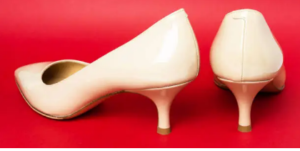Most heel lovers will agree that there comes a point when high heels become painful. Heels cause the centre of gravity to shift forward, creating joint pains and other problems. Choose a pair of low heels with a thicker heel to reduce pressure on your feet and ankles.
Style
 When paired with the right outfit, Jayne Says low heels can elevate your favourite casual look or add an elegant touch to formal dresses. Whether you’re looking for versatile shoes to dress up jeans and a blouse or a pair that will complement your favourite cocktail dress, there are a variety of styles and sizes to choose from. From chic suede block heels to contemporary leather boots, there’s something to suit every taste.
When paired with the right outfit, Jayne Says low heels can elevate your favourite casual look or add an elegant touch to formal dresses. Whether you’re looking for versatile shoes to dress up jeans and a blouse or a pair that will complement your favourite cocktail dress, there are a variety of styles and sizes to choose from. From chic suede block heels to contemporary leather boots, there’s something to suit every taste.
If you’re new to wearing heels, gradually breaking them in is important. Start by wearing them around the house or for short trips. Eventually, you’ll be able to wear them for longer periods without feeling any pain.
To avoid discomfort, choose a heel that is placed further back. Heels located near the toes put more pressure on the ball of your foot and cause discomfort. In addition, they may cause ankle sprains, misalignment of the spine, and tightening of the calf muscles. Choose a heel placed further down, like the one in the first photo, to avoid this problem.
Comfort
While heels add height, make your legs look longer and enhance your curves, they aren’t without problems. The pressure they put on your feet can cause foot pain and blisters and even change how you walk.
Another key to comfortable heel-wearing is to build up to it gradually. Start by wearing low “training heels” to get used to them and give your feet a chance to adjust. Then, slowly increase the thickness and height of your heels. Keep up with the practice (just like a runner who stops training will lose the ability to run a marathon again), and you’ll eventually be able to wear high heels comfortably all day.
Flexibility
There comes a point when the psychosexual benefits of heels cease to outweigh the pain and damage they cause. At this time, most heel lovers put their stilettos away and opt for a more sensible shoe option, such as JayneSays low heels. These shoes perfectly compromise high heels and flats, offering style and comfort.
Although experts agree that wearing heels will strengthen the ankle and foot muscles, they also warn that it can increase the risk of injury. If you’re new to heels, it’s recommended that you start small and work your way up gradually.
Weight-bearing capacity
The extra height of high heels may benefit some women, but they can also be dangerous. High heels force the body to put more weight on one foot, increasing pressure on the metatarsal bones and increasing the risk of falls. It can lead to injuries like bunions and heel spurs. Those who want to wear heels without pain can opt for low heels designed with more wiggle room for the toes and a more stable heel.
Safety
A high heel puts much pressure on the metatarsal bones and increases the risk of bunions, corns and other foot problems. It also causes a change in the balance of the body and the way you walk and stand, which may result in hip or knee pain or back problems.
Heels also cause your feet to swell, which makes them even more uncomfortable. To avoid this, choose shoes with a low heel-to-toe drop and ensure they have enough room for your toes to move around.
If you’re used to wearing Jayne Says low heels, slowly building up your tolerance to them is important. Start by wearing them for short periods. And, if you have to wear them for an extended time, take breaks often to allow your feet and back to rest. It would be best if you also tried to wear heels that are not too high and have a wide heel base, which will help spread the weight more evenly.
Comments are closed, but trackbacks and pingbacks are open.